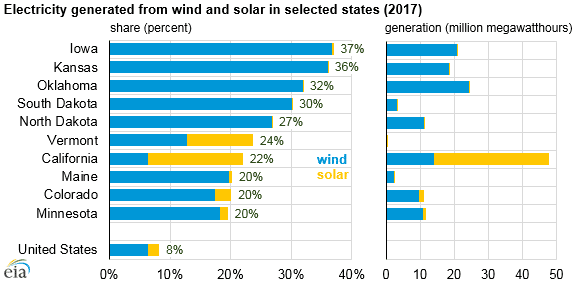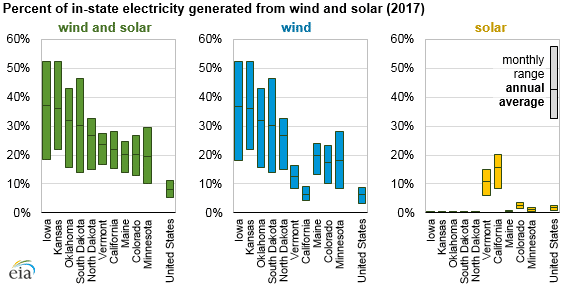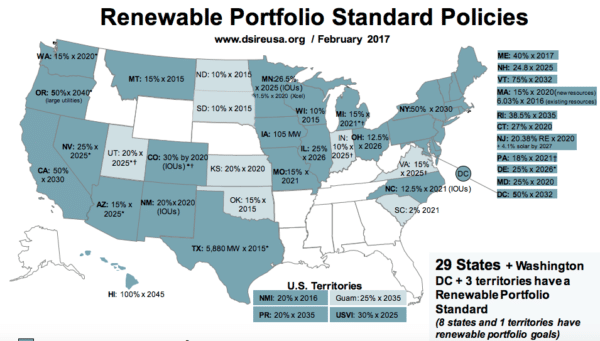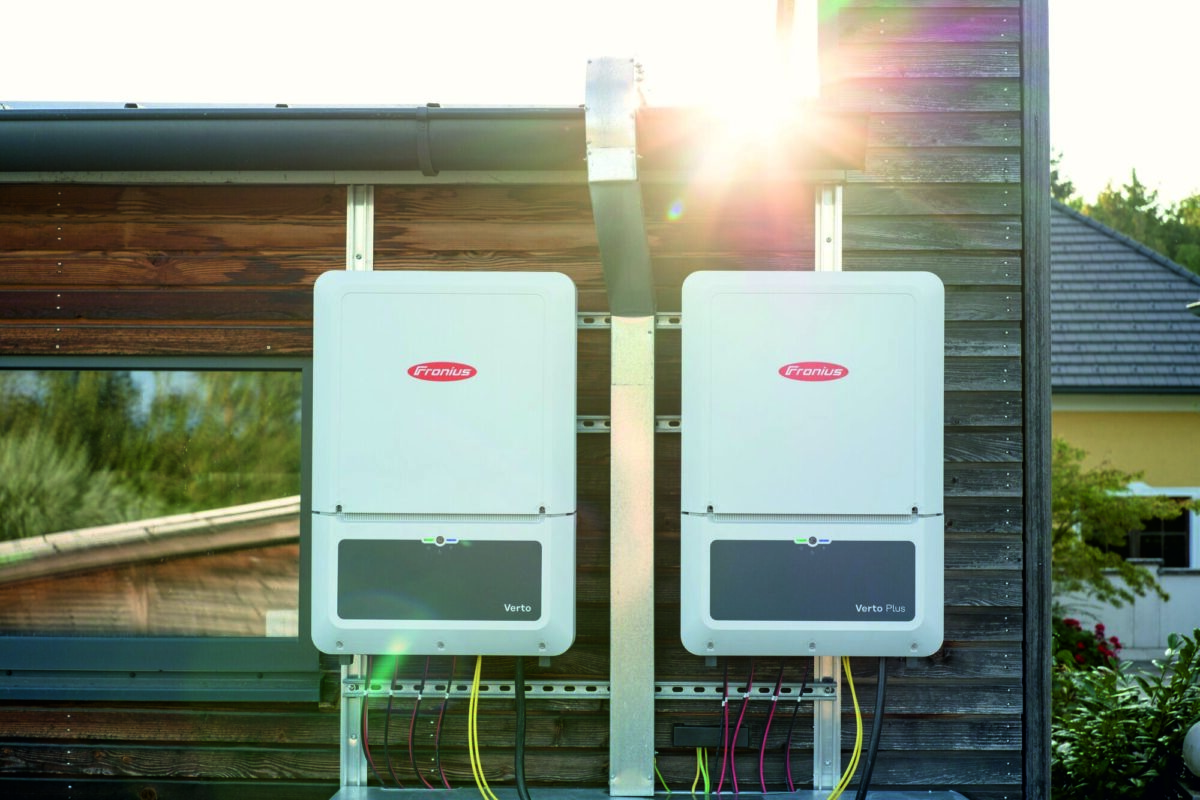From pv magazine USA.
The recent report from the Intergovernmental Panel on Climate Change (IPCC) has put in stark terms that we have 12 years to clean up carbon emissions or face dire consequences.
That’s the bad news. The good news is, an energy transition is under way in electricity. When the U.S. Department of Energy’s Energy Information Administration put out full-year electricity generation numbers for 2017, pv magazine crunched the numbers to find solar represents more than 10% of in-state generation in five states.
And the EIA yesterday topped that with analysis which shows wind and solar represented more than 20% of generation in ten states last year.

That is mostly wind and is led by the Midwestern and Plains States, which have very strong wind resources – on a monthly basis the energy source often represented more than 50% of generation in Iowa and Kansas. However in Vermont (24% wind and solar) and California (22%) solar represented at least half the annual renewables total.

It is also notable many of the top renewables states have small populations and limited electricity demand, which may explain why the EIA found wind and solar made up only 8% of electricity production in the United States in 2017 – although that number had already jumped to 9% in the first half of this year.
The interesting thing about the states leading the transition is most of them don’t have renewable energy mandates. National leader Iowa (37% wind) was the first state to pass a renewable portfolio standard, in 1986; however the policy never advanced and requires only 105 MW of renewable generation, a figure reached long ago.

Kansas, Oklahoma and the Dakotas – at numbers two to five in the rankings – have all blown through voluntary renewable energy goals set at state level for utilities.
However Vermont and California – at six and seven – differ. These states have some of the strongest goals for renewable and zero-carbon electricity in the United States, with California recently mandating 100% zero-carbon generation by 2045, and Vermont calling for 75% renewable energy by 2032 – a goal second only to Hawaii’s 100% by 2045 in its ambition.
Other states are likely to be joining the 20% club in the near future. These include not only Hawaii but Texas, which has been getting a large portion of its electricity from wind and is now undergoing a solar boom.
While wind and solar are not the only renewable resources, they are likely to make up most of the 50%-green-energy-by-2030 mandates in New York and New Jersey, meaning these states are likely to pass the 20% mark within five years.
Between the success of renewable energy in Texas, the Plains States and other regions – and ambitious mandates on the West Coast and in Northeast states – the transition to wind and solar is likely to accelerate over the next decade, regardless of the policy actions of the Trump administration.
This content is protected by copyright and may not be reused. If you want to cooperate with us and would like to reuse some of our content, please contact: editors@pv-magazine.com.



1 comment
By submitting this form you agree to pv magazine using your data for the purposes of publishing your comment.
Your personal data will only be disclosed or otherwise transmitted to third parties for the purposes of spam filtering or if this is necessary for technical maintenance of the website. Any other transfer to third parties will not take place unless this is justified on the basis of applicable data protection regulations or if pv magazine is legally obliged to do so.
You may revoke this consent at any time with effect for the future, in which case your personal data will be deleted immediately. Otherwise, your data will be deleted if pv magazine has processed your request or the purpose of data storage is fulfilled.
Further information on data privacy can be found in our Data Protection Policy.